Maui has just become the latest market for semi-private jet flights aboard an Aero Gulfstream IV, marketed as an “effortless semi-private travel experience.” For some longtime visitors, the launch feels like a metaphor for Hawaii’s shifting priorities.
The plane carries only twelve passengers, with fares starting at $5,495 one way, or nearly $11,000 round trip. The pitch is simple: Hawaii without the lines or the crowds. Boarding takes place in private terminals with valet service, champagne lounges, and TSA checkpoints (yes, now required on public charters).
The cabin is arranged more like a private club than a commercial flight, with oversized leather seating, chef-designed meals, premium drinks, and pets riding freely in the cabin.
The timing is impossible to miss. At the very moment longtime Maui visitors say they are being priced out by higher travel costs, resort fees, and rising daily expenses across the islands, Hawaii now welcomes a new tier of travel reserved only for those who can pay five figures to arrive. When you combine Aero with stays at the Four Seasons Resort Maui, you’ll receive additional travel perks with their new collaboration.


This Maui private jet package is built to dazzle.
Travelers are met at private terminals in Los Angeles, where valets handle cars and luggage, and check-in resembles a luxury hotel more than an airport. Lounges are stocked with full bars, champagne on ice, fresh-pressed juices, and plated meals more like a fine restaurant than an airline club.
The aircraft is equipped with oversized Italian leather recliners in a 2×1 layout, providing ample space to stretch out, noise-canceling headsets, large screens, and Starlink Wi-Fi. Multi-course dining is plated on fine china with glassware. Menus are seasonal and chef-designed, with entrees such as seared ahi or filet mignon, followed by desserts that would not look out of place in Paris. Wine lists lean on Napa and Sonoma, and cocktails are shaken to order.
Even pets are welcome to ride in the cabin, provided 30 days’ notice is given. However, every animal arriving in Hawaii is still subject to the state’s strict quarantine rules, including vaccination and inspection.
On arrival in Kahului, bags are offloaded by hand and delivered straight to passengers, eliminating the wait at the carousel.
Every detail is designed to reinforce the message that Maui is no longer simply a vacation but an indulgence reserved for those who can afford to buy away the hassle. That now includes flying on a Gulfstream private jet.
Flights are currently limited, operating once a week. Aero departs Los Angeles’ Van Nuys Airport on Saturdays at 10:20 a.m. and lands in Kahului at 2:05 p.m. The return is on Sundays, leaving Maui at noon and arriving back in LA at 6:55 p.m.
The reality for regular travelers tells a different story.
That carefully curated Gulfstream experience collides with what most visitors actually face. For families, the sticker shock now comes from every corner of a Hawaii vacation, and it often begins with the airfare itself, which has climbed sharply since the pandemic.
From there, car rentals can easily run $1,000 a week. Resort fees now average $60 per night, in addition to already sky-high room rates. A simple grocery run for basics often tops $300, and dining out can mean $200 for two without splurging at all. Add in taxes, parking charges, and activity surcharges, and a trip that once felt like an attainable family tradition now feels out of reach.
One longtime visitor told us, “After 40 years of coming every summer, it’s just not worth it anymore. We can spend half as much in Mexico and feel welcomed.”
Another said, “It cost $12,000 just for flights and a modest condo in Kihei. That was before food or a car rental. After decades of coming twice a year, we are out.”
A third commented, “Hawaii is now for the angry poor locals or the Oprahs and the Zuckbergs. Sad, it was such a wonderful place.”
Leaders want fewer visitors who spend more. Are these them?
Hawaii’s leaders have been increasingly open about wanting fewer visitors who spend more. Governor Green and Maui County officials have tied new surcharges, higher taxes, and proposals to restrict thousands of short-term rentals to that philosophy.
The era of affordable, accessible Hawaii is on its way out, and in its place is a model that targets high-spend travelers.
In that sense, $11K Maui flights are not an accident but a symbol. They embody the vision of “better customers only,” even if that vision sits uneasily alongside the deep frustrations of longtime guests who now feel squeezed out.
Small businesses also fear being left behind.
The risk is that wealthy visitors on semi-private jets may not replace the spending patterns of the middle class. Luxury passengers tend to stay at gated resorts, dine on property or at high-end restaurants, and keep their spending primarily within curated, resort-approved channels.
That flow of dollars benefits international hotel chains and mainland investors far more than the small family-owned restaurants, fruit stands, shops, and tour operators that loyal visitors once supported.
For decades, small businesses from farmers’ markets to family-run tour boats thrived on the steady rhythm of middle-class visitors. The couple who came every summer and stocked up on produce, hired a fishing charter, or bought jewelry or art from a Front Street gallery that no longer exists is far less likely to be replaced by a jet-set traveler who rarely leaves Wailea.
One reader told us, “Bottom line, I felt like I was being told to get off the island but leave my wallet on the table.” Another added, “We went to Fiji twice this year instead of Hawaii. Same price, cleaner, less congested, the people were so kind, and you don’t have to be a 100-millionaire to live there.”
Hawaii is still facing a tourism identity crisis.
What is emerging is an undeniable identity crisis. Hawaii has long promoted itself as a place of Aloha, where families could return year after year and feel at home. Now, with visitors priced out, loyalists leaving, and $11K luxury flights debuting, the message has shifted.
For residents, fewer visitors may sound appealing after years of crowding, but the loss of repeat travelers threatens jobs, tax revenue, and the small businesses they depend on.
Is Hawaii truly ready to abandon the base that carried it for decades in favor of courting a smaller pool of elites? If so, will that shift actually sustain the islands’ fragile economy, or will it accelerate the hollowing out of small businesses already reeling from rising costs and the loss of Lahaina?
For Maui, the contradiction is stark. On one side, visitors are told they are too numerous, too demanding, and too disruptive. On the other hand, a red-carpet jet experience awaits those who can afford five-figure tickets, offering a trip to Hawaii.
The Hawaii loyalists who once carried the island’s tourism legacy are left wondering where they fit in, and increasingly deciding that the answer is nowhere. The question now is whether Hawaii can afford to trade loyalty for luxury, or if the islands could get left with neither.
We welcome your thoughts on today’s post.
Get Breaking Hawaii Travel News

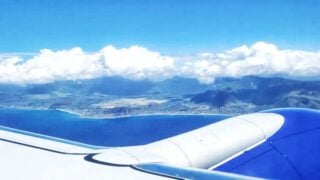
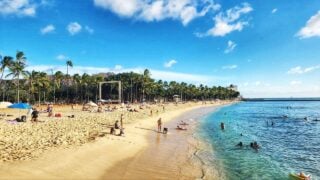
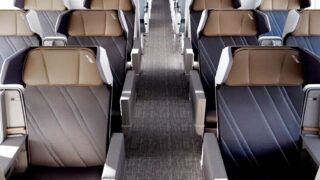
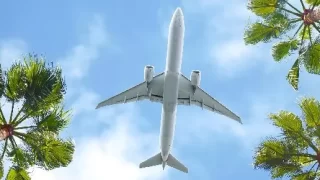
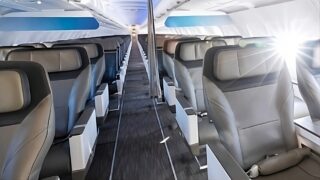
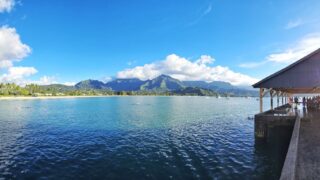
So if this plane only carries 12 passengers once a week, it’s a nothing burger. 99.999999% of visitors will continue to arrive the same way they always have.
Now, if they removed all of the scheduled service and replaced it with private jets, and this semi-private jet only, that would be something.
As a long time Maui resident, this article makes me sad. The reality is that a very vocal minority is working to shutdown tourism in Maui County. Their goal appears to be to turn Maui into Molokai with no tourism, no BnB’s allowed, a hotel that is a hovel, very few jobs but lots of residents on welfare. Lanai is an ultra luxury enclave. In the name of green, Maui is next. The sweetest scenes around Maui are hand holding couples watching the sunset. So sad they are being voted out by a short sighted minority.
I’ve lived in Hawaii for 57 years, and I love it here.
Would I vacation here now as a visitor, no way. There are much better places to visit at way less prices.
Sad, but what was is gone.
For $10k total, my wife and I just spent 3 weeks driving around South Korea, the southern end and avoiding Seoul during cherry blossom season. A fabulous trip.
Now, Hawaiian Air is saying Aloha to that route. Boo, hiss!!!
You have emphasized the high end tourism on Maui. From my experience, each island is unique offering their own brand of vacation experiences. Yes, Maui may be becoming too expensive for those with long time memories of Maui vacations. However, there are wonderful short term rentals and hotels on the Big Island for Middle Income tourists to choose from, as well as a choice of wet/forested Hilo and beach centered Kona. Maybe try some of these destinations!
Well said and very level headed. TU
As a lover of Maui, with intentions of moving to the island, I’m wondering where you’re getting some of these numbers? Flights to Maui from Los Angeles are under $600… in the summer. Weeklong AirBnb condos are plentiful under $4000 for the week, there are plenty of options under $2500.00. Yes the resorts and some restaurants have gotten out of hand, but there are many options much more affordable than you’re leading on to. There’s so much more I can point out, but I should stop at some point. Perhaps this article was meant to help curb the influx of visitors. It’s very inaccurate! Aloha and Mahalo!
There has been a change in recent years on the type of people visiting Maui. Entitled trailer trash with no respect for the land or the people that live here. Hopefully we can find some kind of middle ground, but as of now, airlines have become the Greyhound Buses of the skies, bringing the absolute worst visitors, and the people that live here have had enough.
If not the tourist industry, then what industry can residents work and afford a home??
We’ll go to Kauai in January for our typical 4 week escape from the gloom that envelopes the PNW every year. Our 32nd trip to Hawaii. I’m not sure if we’ll return again, but we’ll see. The airfare and car rentals have certainly gone up and there are fewer places to spend money. At least we’re not spending significantly more for a place to stay. Having a ton of points with our time share company does help.
I saw Fiji mentioned. The resorts on Fiji are surrounded by poverty. The people of Maui are about to have a rude awakening.
Our niche Hawaii business is off more than 40% and not likely to improve no matter what we do. Three overwhelming factors: (1) Hawaii pols cannot continue to have visitors paying the bills via taxes/fees/surcharges; (2) Greedy hoteliers continue to keep prices artificially inflated, which chases away international visitors and groups. This also plays into the scenario of attracting the more well-heeled visitor; (3) The Canadian and international market segments have turned away from the U.S.
Yet Hawaii is still experiencing massive tourism. Yes you can go to Mexico, etc., but you better be a savvy traveler with your guard up. On a recent trip to Columbia when we arrived at the JW Marriot every unknown person entering the hotel was wanded for firearms by a well dressed, large bellman backed up by several others. Other less expensive destinations around the world can be very safe and very cheap. Rural Chile and Argentina. Surprisingly Cuba and Iran, friendly and safe, as long as you’re not CIA or do something stupid.
Bottom line is all of Hawaii is not gouging tourists. It’s just expensive. Residents are struggling financially, so If you visit feel a bit of compassion for the people helping you.
IMO what type of fool would drop 11k just to fly roundtrip from island to island?
It’s LA to OGG, not Island to Island, unless you consider North America as one huge Island!
That can be attributed to the values of the immature. If you’ve been impressed by Trump, Oprah, Bezos or Zuckerberg or aspire to that stuff including the arrogance you are complicit in all of it. Keep those names and those who worship them off the Islands and it would be better. My fellow fadist boomers went from tie dyed crap to Coach purse crap.